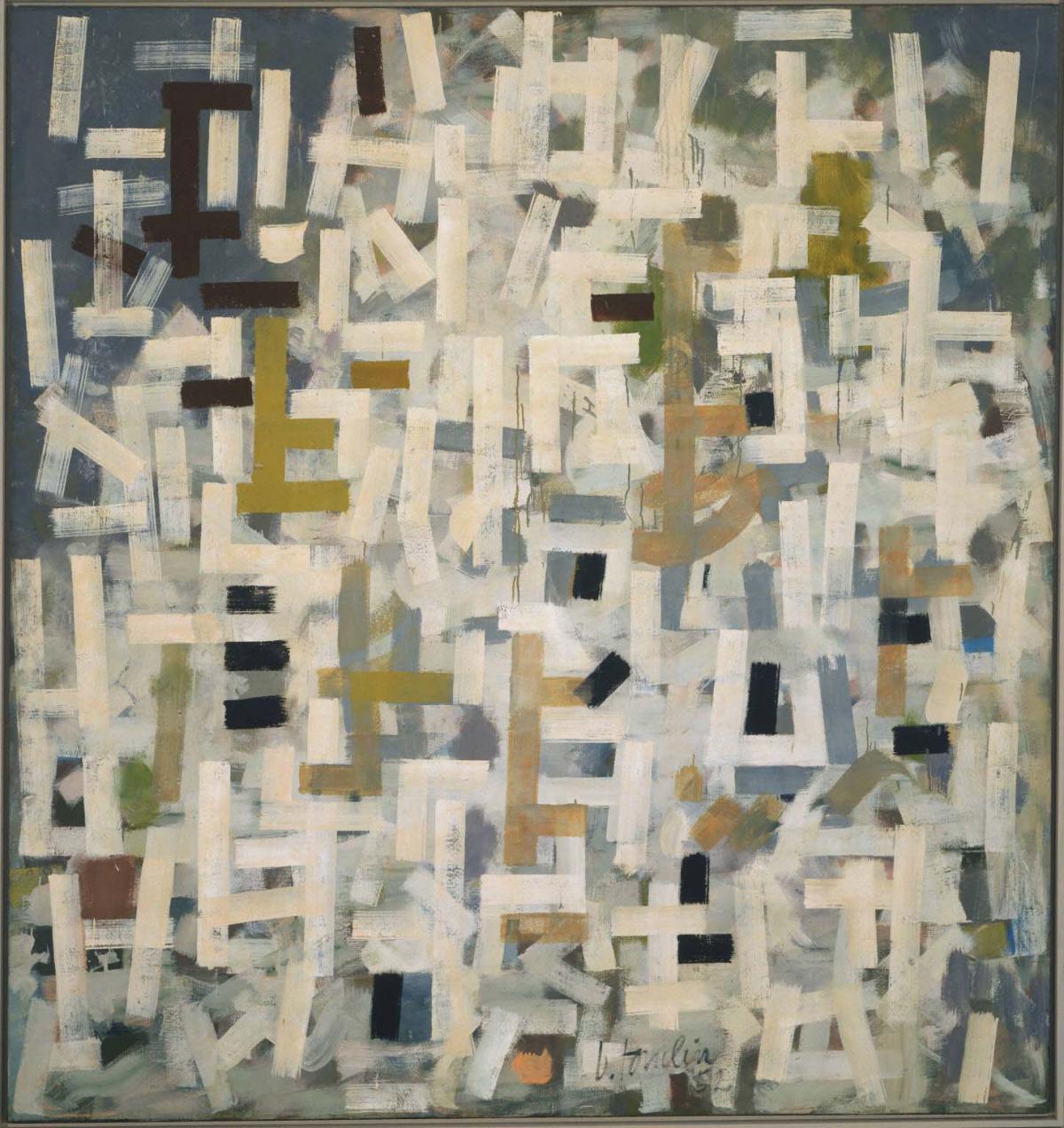No. 9
Bradley Walker Tomlin ( 1952 )

Painted a year before Tomlin’s death, No. 9 exemplifies the non-objective, calligraphic technique for which the artist is best known. In 1945, his friendship with artists in the circle of Adolph Gottlieb and his subsequent immersion in the ideals of abstract expressionism moved Tomlin away from his cubist style. He experimented seriously with automatism and gestural painting, enlarging his canvases and assigning number titles to his paintings. Tomlin’s late paintings are not as forceful as mainstream abstract expressionism; instead, they have a considered, rational quality. In his mature work, Tomlin simultaneously combined elements of control and impulses of freedom, expressed through structured grids filled with spontaneous brushstrokes.
Structured in appearance, No. 9 is composed of a series of linear, calligraphic crossed strokes which form a layered network against a field of varied color are The linear grid-like network and its apparent migration toward the center of the image bear similarities to the work of Mondrian and Tomlin’s colleague Ad Reinhardt. While most of the strokes in No. 9 are vertical or horizontal, several diagonal and semicircular touches intervene to break the repetition. In late works Tomlin used white or light colors for the most dominant brushstrokes, creating a gossamer, luminous effect. The gray, off-whites, earthy olives, and brick reds of No. 9, are accented with black strokes that heighten the staccato rhythm of the painting.